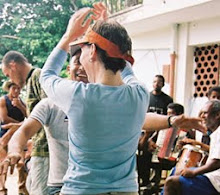Greyhounds as Pets: Facts
A sleek, contoured dog, they are built for speed with a very deep chest and an extraordinarily flexible, curved spine. The eyes are dark and the neck is long and graceful. The front legs are absolutely straight; The hindquarters are very powerful and muscular. The long tail is carried low and has a slight upward curve at the end. The short, smooth coat comes in all dog colors.

Their temperaments are sensitive, sweet and elegant. They are brave and loyal, but can be willful. The Greyhound is very intelligent, but its character is often undervalued because of its reserved behavior toward its master and toward strangers. As a rule, they are gentle and even-tempered.
Their talents include hunting, sighting, watchdogging, racing, agility, and lure coursing. Most Greyhounds have a definite prey instinct and may chase anything that moves quickly. They are extremely fast and some will kill cats and other domestic animals, although this is not the majority (only about 20% are too "keen" on chasing prey to ever be safe with small animals, about 10% are okay due to low prey instinct, and the rest can be trained to leave cats and other small pets in the home alone). They seldom present difficulties with other dogs and are normally good with children, though they do not usually like rough-house play, and would not be a good choice for young children.
 Indoors, these dogs are calm and sociable to a point where they can even be considered lazy "couch potatoes". They bond strongly with their own people, have tremendous stamina, and do not bark much. Racing lines are bred for performance, but often a good by-product are friendly, outgoing dogs, who make wonderful pets when their racing days are over.
Indoors, these dogs are calm and sociable to a point where they can even be considered lazy "couch potatoes". They bond strongly with their own people, have tremendous stamina, and do not bark much. Racing lines are bred for performance, but often a good by-product are friendly, outgoing dogs, who make wonderful pets when their racing days are over.There are hundreds of adoption groups all over North America, Europe and Australia to place these gentle, loving dogs when they retire. Greyhounds are not usually difficult to housebreak. Retired racing dogs are already crate trained from the track, so it doesn't take them long to learn that they are not to "go" in the house.
The Greyhound will do okay in apartment living conditions if they get enough exercise. They are relatively inactive indoors and a small yard will do. Greyhounds that are kept as pets should have regular opportunities to run free on open ground as well as have long, brisk walks, preferably at the same time every day. Greyhounds love a regular routine. Greyhounds are sensitive to the cold but do well in cold climates as long as they wear a coat outside.
- Average Weight = 60-70 pounds
- Average Life Expectancy = 10-12 years.
- AKC Group = Hound










